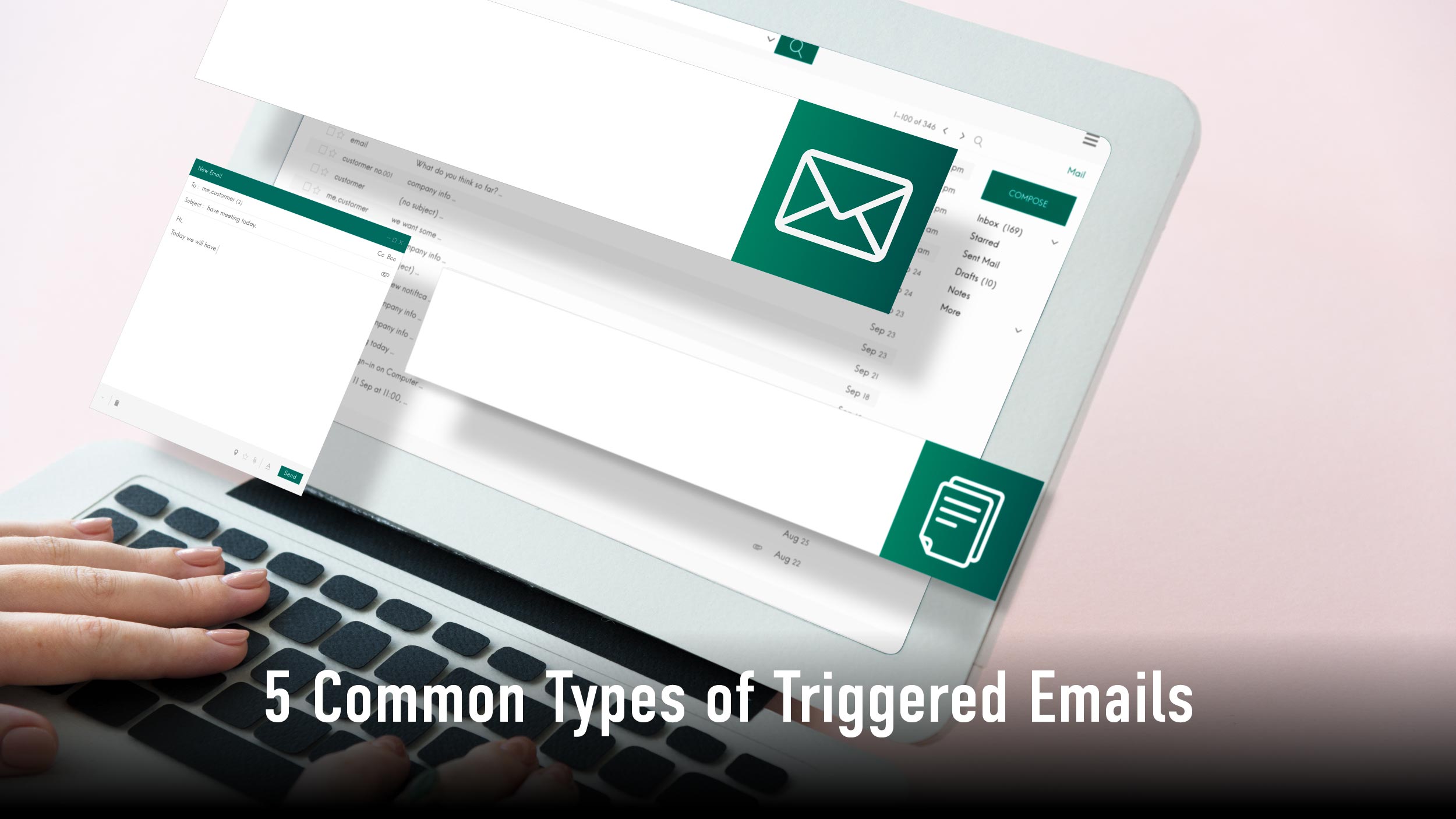Triggered emails have emerged as a lucrative marketing strategy for eCommerce, yielding significant revenue annually. This technology has evolved into an advanced automated system, effectively drawing in potential customers and retaining existing ones.
To maximize the effectiveness of triggered email marketing, it’s essential to utilize various triggers tailored to different stages of the purchase funnel. Understanding the shifting intent of shoppers as they progress toward purchase is crucial. Without further ado, let’s get started.
What are Triggered Emails?
Triggered emails (transactional or behavioral emails) are automated emails that are sent to individuals based on specific events, conditions, or user behaviors. These emails are personalized and timely, providing value and relevance to the recipient. Triggered emails can be set up to be sent when a customer takes a particular action, such as abandoning a shopping cart, signing up for a newsletter, or reaching a milestone in their customer journey. They are highly effective in engaging customers, improving customer experience, and driving conversions. By leveraging triggered emails, businesses can deliver targeted messages and nurture customer relationships throughout the customer lifecycle.
Also Read: Programmatic Display Advertising- What is It and Why is it Important?
Why Are Triggered Emails Important?
 Trigger emails serve several vital purposes in marketing strategies: they boost revenue, save time, meet customer expectations, and enhance retention rates through consistent nurturing messages. Let’s explore the significance of trigger email campaigns:
Trigger emails serve several vital purposes in marketing strategies: they boost revenue, save time, meet customer expectations, and enhance retention rates through consistent nurturing messages. Let’s explore the significance of trigger email campaigns:
- Enhance the customer experience: Trigger emails deliver personalized content instantly by matching shopper data with product catalog information, resulting in more relevant outreach tailored to individual preferences and behaviors. Trigger emails boast an impressive 18.76% open rate, showcasing their effectiveness in engaging recipients and driving interactions.
- Improve loyalty: By identifying and engaging at-risk shoppers before they exit the sales funnel, trigger emails play a crucial role in modern nurture campaigns. They also encourage continued purchases, particularly with replenishment emails, fostering long-term customer loyalty.
- Increase revenue: Trigger emails capitalize on the moment when shoppers are ready to buy, contributing significantly to email revenue despite representing a small portion of total emails sent. Additionally, they promote loyalty, ensuring sustained revenue over time by retaining customers.
- Save time: Trigger emails streamline email marketing automation efforts by eliminating the need for manual intervention. With predefined triggers and relevant email templates, marketers can efficiently reach qualified subscribers without the labor-intensive processes of traditional email campaigns.
In essence, a well-executed trigger email strategy can transform casual buyers into loyal brand advocates by promptly addressing their needs and interests.
5 Common Types of Triggered Emails
 Trigger emails are an essential part of any effective email marketing strategy. Here are five common types of trigger emails you can incorporate into your campaigns:
Trigger emails are an essential part of any effective email marketing strategy. Here are five common types of trigger emails you can incorporate into your campaigns:
- Welcome Emails: Sent to new subscribers, loyalty program members, or newsletter subscribers, welcome emails introduce your business and set expectations for future communications. Include a call to action (CTA) to encourage further engagement.
- Cart Abandonment Emails: Triggered when users add items to their online shopping carts but leave the site without completing the purchase. These emails remind customers about their abandoned items and may include incentives like discount codes to encourage them to complete their purchases.
- Purchase Confirmation Emails: Transactional emails are sent automatically after a purchase is made. These emails typically include order details, delivery information, billing details, and a message thanking the customer for their purchase.
- Back-in-Stock Emails: Sent to customers who expressed interest in a product that was previously out of stock. These emails notify customers that the desired item is available again, whether they added it to their wishlist or requested inventory alerts.
- Customer Feedback Emails: Triggered after customer interactions with your business, such as making a purchase or contacting customer service. These emails solicit feedback about the customer’s experience and provide an opportunity for improvement.
Experimenting with these types of trigger emails can help you develop effective email marketing campaigns and enhance customer engagement and retention.
Triggered Emails Best Practices
To optimize the effectiveness of triggered emails, adhere to these best practices. Firstly, personalize your messaging to cater to individual customers, fostering stronger relationships. Secondly, keep the content concise and straightforward to ensure readability, especially on mobile devices, where lengthy emails can deter engagement. Lastly, include a clear call to action (CTA) to prompt recipients to take desired actions, guiding them through the customer journey and enhancing overall engagement and conversion rates.
Final Takeaway
Triggered email campaigns offer a powerful means of boosting engagement for businesses and brands alike. By employing triggered emails, businesses can effectively guide users along the buyer’s journey, prompting actions such as making a purchase, completing a form, or downloading a guide. It’s essential to select triggers carefully, aligning them with specific growth objectives and online customer behaviors. Leveraging robust marketing automation software with intuitive drag-and-drop workflow builders enables seamless automation of email campaigns, streamlining the process for efficient and effective engagement strategies.


Comments are closed.